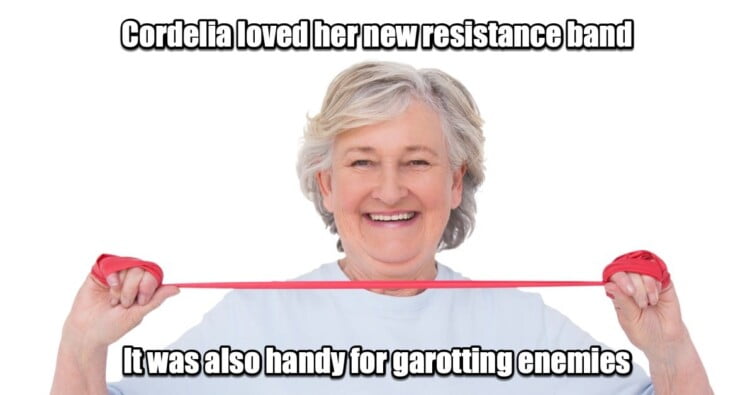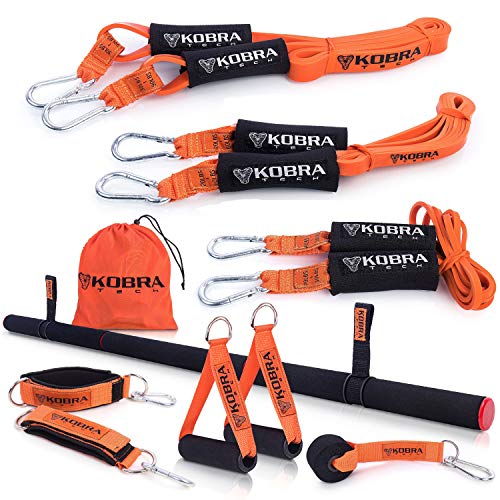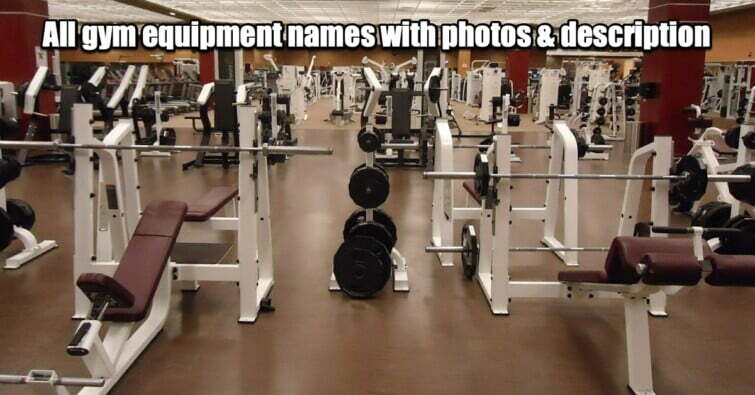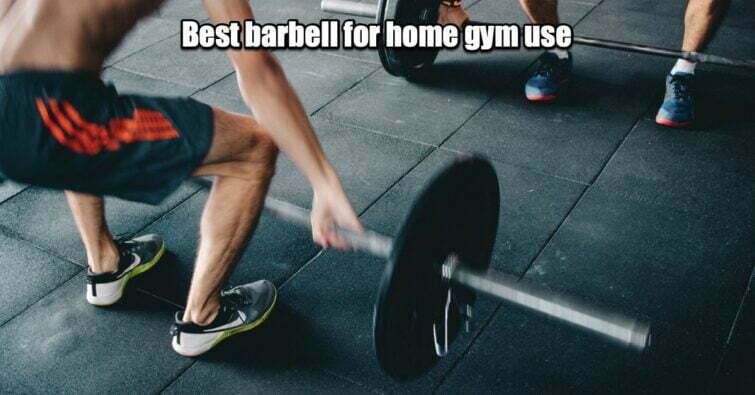As Amazon Associates we earn from qualifying purchases.
Training with different types of resistance bands is an excellent choice for almost everyone who is interested in fitness or rehab.
From complete beginners who want to workout anywhere to long-time trainers who are finding it hard to fit in their gym visits, from rehabilitation to sports-specific workouts, resistance bands have their place.
How many different types of exercise bands are there?
There are 8 popular types of resistance bands for fitness that are effective for different types of training effects, including some lesser-known types of workout bands. By the end of the post, you should have a good idea of which is right for you.
Many resistance bands and sets are very similar or simply rebranded from the same manufacturer. This is something to bear in mind, so depending on your fitness goals and ability, certain types of the different resistance bands will be more appropriate for you than others.

What are the different types of resistance bands?
There are 8 types of resistance bands available that we will cover:
- Tube resistance bands with attachments
- Loop resistance bands
- Recovery bands or Therapy bands
- Booty bands or stabilizer bands
- BFR bands (Blood flow restriction bands)
- Pedal resistance bands
- Finger resistance bands
- Resistance bands with bar set
1. Tube resistance bands with attachments
Tube resistance bands are probably the most versatile type of resistance band option that you can go for and are the best type of resistance bands for full body workouts using compound movements and isolation movements alike.
You will often find these in a set that comes complete with several differing thicknesses, color coded bands, and a set of attachments, and this is where the versatility comes in.
The resistance tubes themselves have small clips at each end to attach other components such as handles, stirrups, and can also be linked together to form a loop band.
Most resistance band tube kits come with five thickness variations of resistance tubes, so one of the benefits of resistance bands of this style is that the tubes offer a wide scope for progression, so from the total beginner to the gym veteran this option is the perfect choice if you are looking for a set of home workout bands.
2. Loop resistance bands
As the name suggests, loop resistance bands are made as a continuous loop. Like the tube bands, these can be used for strength training, rehab work or even as ballet stretch bands. Although you can get resistance band color code kits of varying tensions; it’s easier to get hold of single bands of this type.
This is because a lot of people use these types of fitness bands to assist with pullups. If you are struggling to perform a single pullup on a bar, grab one of these, loop it around the pullup bar to create a kind of cradle, set up for a set of pull ups, but put your knees inside the band, then try the pullups again.
Once you start to develop form with this resistance, choose a loop band with less tension, or even try again without.
3. Recovery bands or therapy resistance bands
Physical therapy resistance bands come in varying lengths of relatively thin rubber. Unlike the other types of band, these are designed to add small amounts of resistance to functional movements so they are the best type of resistance bands for rehabilitation.
Therapy bands are much wider than tubes or loops as the anchor points are often used on parts of the body, so this makes using them more comfortable. This flat, wide design also makes it easy to create a sturdy grip at any point on the band without attachments.
These are ideal for people recovering from injury or surgery when their movement is restored, but slight resistance is needed for specific exercises before making the step to full function, and more intense training for muscle development.
4. Booty bands or stabilizer bands
Booty bands are a version of a loop band, but use a smaller circumference. Booty bands are also much wider and flatter as they are used to put tension across the quads to add resistance when the knees are widened during some exercises; this is called “hip abduction”.
The most effective way to use these bands to target the glutes or “booty” is to use a hip abduction movement whilst lying on the floor or standing.
So these are the best type of bands if you want to target the lateral thigh muscles and glute medius. These booty bands are very popular for use with exercises like squats, deadlifts and hip thrusts, but I would not say that this is necessary for glute development in these exercises if your form is good.
Use these for abduction movements and maybe hip thrust movements, but it is debatable to use booty bands for big compound movements.
5. BFR bands (blood flow restriction bands)
BFR bands are a specialist piece of kit designed primarily for muscle growth, usually on the biceps and quads. The idea behind this type of band is that it acts like a loose tunicate.
As the name suggests, blood is restricted to the muscle group while performing an exercise, and less blood flow means less oxygen. Less oxygen means that the muscle will reach exhaustion sooner, with less resistance used.
That’s the basic science! In short, you will hit a “pump” a lot quicker. If you are in the muscle building game and are struggling with bicep or quad growth, give these a try, but be sure to lower the resistance and increase the reps in your resistance band workout routine, but as always, make exercise form a priority!
This type of band may also be useful when rehabilitating a muscle group, but this should always be discussed with your physiotherapist as it may be detrimental to your specific condition.
6. Finger resistance bands
Finger resistance bands are another niche piece of equipment. These are available as small loop bands or bands that have dedicated rings for each finger.
The latter is probably most useful as the separate rings allow more stable placement of the resistance bands. Finger resistance bands are used to develop grip strength or can be used for mobility type exercises for arthritis or carpal tunnel sufferers.
It’s worth knowing that due to the mechanics of the fingers, working with these bands will also bring into play the forearm flexors and extensors, so some forearm strength and function benefits will come from using these too.
If you are rehabilitating and aim to develop hand and finger function, this may be a piece of kit that will come in “handy”.
7. Pedal resistance bands
I would suggest that pedal resistance bands are best for exercises that use a static hold from the upper body and a dynamic movement through the legs. Imagine holding the hand grips and pushing the legs away while in a seated or semi seated position.
This seems to be the most effective movement but exercises such as bicep curls and shoulder press are possible. Because of the nature of this piece of resistance kit, the use is fairly limited when compared to the resistance bands with attachment sets that are available to us in this price range.
If you are focused on leg, glute and core development and would like a robust platform to place your feet in whilst exercising with resistance bands, these might be a good choice for you.
There are options out there that also have variable resistance settings, but if your choice was between pedal resistance bands or a tube resistance band set with the attachments, I would go for the latter.
8. Resistance bands with bar set
Working out with resistance bands with bar sets is great for building strength and stacking multiple bands for big resistance.
There are several types of resistance band and bar sets available, the first has a platform that you stand on, complete with anchor points to attach bands to, but the most common type has stirrup attachments around the feet.
Generally, the bands that come with these kits are shorter than the tube resistance band sets to offer a stronger resistance when moved over a shorter range.
Although there are many variations of these kits available, it is possible to pick up a single bar to use in conjunction with any of the different fitness bands you may have lying around already, or are planning to buy.
If you are looking for strength gains specifically, I would suggest however, investing in one of these sets rather than adding a bar to a normal tube kit due to the bands being shorter and a better fit for your goals.
Resistance bands bar sets are a good choice for training with big compound exercises such as bicep curls, squats, bent over rows and shoulder press.
Our conclusion about the different kinds of resistance bands
As you can see, there are plenty of options to choose from when it comes to exercising with resistance bands, from full kits for full body workouts, to single bands for rehabilitation.
Some of these options are more limited in their function than others and your choice will depend on your training goals. We hope this has given you a better idea of the options available so you can make the right decision for your training situation.
What kind of resistance bands should I get?
I often get asked what resistance bands to buy, and the answer is always the same: the kind of resistance bands you should get depends on your fitness goals. We’ve given you an overview of the most useful fitness bands available to guide you in the right direction.
I am a big advocate of the tube resistance bands sets with attachments.
These are super versatile and can be used for full body workouts along with rehabilitation and even stretching exercises. If you learn how to use these properly, you will realize that you have a full gym in a little bag. The price of these kits is often cheaper than a single month gym membership!
If you are in rehabilitation or aim only to use resistance bands to strengthen a single muscle with a view to moving back into a gym setting, I would suggest grabbing a few recovery or rehab bands and working with a physiotherapist to get you back into shape.
If you are more experienced in resistance training and are looking for ideas on which resistance band to buy to add more progress and intensity to your workouts, you may find that BFR bands are worth looking into.
Whatever your needs, you can take a look at our article detailing the best resistance bands if you need more guidance.
Amazon and the Amazon logo are trademarks of Amazon.com, Inc, or its affiliates.











